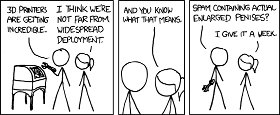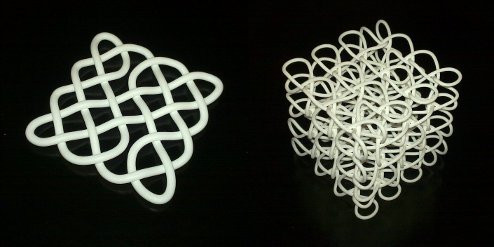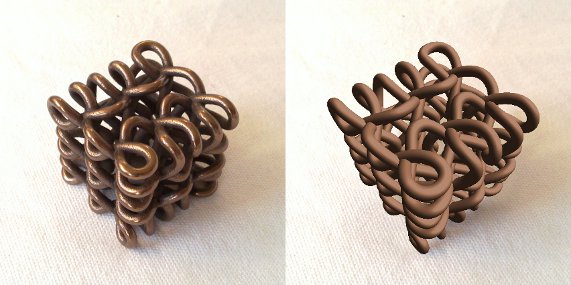List items
Items from the current list are shown below.
Blog
All items from February 2012
19 Feb 2012 : The World Wild West #
 The Web used to be like the Wild West: lawless and anarchic, yet at the same time inspirational and free. But frontiers get pushed back, and beasts get tamed. Today the Web is a far 'safer' place, with much of the control ceded to governments and corporations. One of the happier casualties of this appears to be spam, which through a combination of law and technology, is now a far less aggressive problem than it was back then.
The Web used to be like the Wild West: lawless and anarchic, yet at the same time inspirational and free. But frontiers get pushed back, and beasts get tamed. Today the Web is a far 'safer' place, with much of the control ceded to governments and corporations. One of the happier casualties of this appears to be spam, which through a combination of law and technology, is now a far less aggressive problem than it was back then.
Since the start of this site, I've always used a public email address that was separate from the private email address I gave to people personally. The reason was to reduce spam, and also because companies couldn't be trusted to use my email address responsibly. Today the amount of spam I receive, even on the public address, is bearable and companies are much more likely to actually comply with the data protection laws preventing distribution of contact details. As a result, I've decided to finally move over to using just a single, simple, email address. The plan is to make my life easier and have fewer addresses to deal with. Whenever I write out my name on official forms it's always hard to fit it into the space provided. Finally I can now avoid having the same problem with my email address as well!
 The Web used to be like the Wild West: lawless and anarchic, yet at the same time inspirational and free. But frontiers get pushed back, and beasts get tamed. Today the Web is a far 'safer' place, with much of the control ceded to governments and corporations. One of the happier casualties of this appears to be spam, which through a combination of law and technology, is now a far less aggressive problem than it was back then.
The Web used to be like the Wild West: lawless and anarchic, yet at the same time inspirational and free. But frontiers get pushed back, and beasts get tamed. Today the Web is a far 'safer' place, with much of the control ceded to governments and corporations. One of the happier casualties of this appears to be spam, which through a combination of law and technology, is now a far less aggressive problem than it was back then.
Since the start of this site, I've always used a public email address that was separate from the private email address I gave to people personally. The reason was to reduce spam, and also because companies couldn't be trusted to use my email address responsibly. Today the amount of spam I receive, even on the public address, is bearable and companies are much more likely to actually comply with the data protection laws preventing distribution of contact details. As a result, I've decided to finally move over to using just a single, simple, email address. The plan is to make my life easier and have fewer addresses to deal with. Whenever I write out my name on official forms it's always hard to fit it into the space provided. Finally I can now avoid having the same problem with my email address as well!
12 Feb 2012 : Celtic Knots: moving from 2D to 3D #
A couple more prints have arrived from Shapeways and once again I'm really pleased with the results. The first was a bit of an experimental print for a number of reasons. It's another 3D Celtic knot, but this time I tried it with much thinner threads, right down to the minimum of 0.7mm thickness recommended by Shapeways. I get the feeling this recommendation is intended for walls, so I'd feared the threads wouldn't be strong enough to hold together. In fact, the final result is perfectly sturdy and the threads seem quite robust. Second, I tried the polished version of the "white strong and flexible" material (which is apparently a kind of nylon). The polishing process involves shaking the model with lots of tiny polishing balls, so again I'd feared this might affect the models strength. And again, it seems my fears were unfounded. Finally, I generated the model to have gaps where the threads cross over, the hope being it would be printed in four separate pieces. Unfortunately I apparently didn't give enough clearance, and some of the threads fuse at these intersections. Nonetheless, some of them are still loose, and the result is really great. I may try it again with a bit more of a gap next time though.

The second knot is a proper 2D Celtic knot. The idea is that this is generated from the same seed as the 3D knot, making it in some sense the 'same' knot. That's not really true, but until I figure out what's really meant by 'the same', this is as close as I can think of. I was pleased to find that, since they're both printed with the same dimensions, resting the 2D version on one of the faces of the 3D knot, they align nicely and really look like one is an extruded version of the other.
Once again, printing out these knots has provided some really nice results, leaving the biggest problem the question of what to print next.

The second knot is a proper 2D Celtic knot. The idea is that this is generated from the same seed as the 3D knot, making it in some sense the 'same' knot. That's not really true, but until I figure out what's really meant by 'the same', this is as close as I can think of. I was pleased to find that, since they're both printed with the same dimensions, resting the 2D version on one of the faces of the 3D knot, they align nicely and really look like one is an extruded version of the other.
Once again, printing out these knots has provided some really nice results, leaving the biggest problem the question of what to print next.
4 Feb 2012 : From theory to practice #
Yesterday I received another print from Shapeways. It's my first metal creation using a clever printing process that takes a 3D model as input and creates a completely formed bronze object as output.
Perhaps unsurprisingly it's another 3D Celtic knot. Once again, in spite of the dubious model I provided, the result is just brilliant. It's a real chunk of metal that looks like it's been hewn and polished into a complex shape through hours of craftsmanship. It did take hours of work of course, but in reality it was largely done using completely routine machine production techniques. Here's a shot of the result.

We all have dreams about the things we want to do when we're grown up, like becoming pop stars, train drivers, footballers or whatever. As we grow older we find we have to shed some of these hopes. There comes a point when the realisation sets in that perhaps there are people better suited to fighting dragons. Having spent practically all my life working with either maths or computers, I'd pretty much given up hope of ever doing something that actually produced physical results. It sounds like a strange dream, but the prospect of being able to create something tangible has always seemed exciting.
It's surprising then to find a path of entirely abstract ideas can lead so naturally into a process of creating physical constructs. This is the solution 3D printing offers. It allows people to turn abstract ideas into physical form, without ever having to leave the comfort of a computer screen. No need to get your hands dirty.
Of course, the physical infrastructure needed to get to this point is phenomenal (electricity, Internet, banking, etc.). Someone had to build it and huge numbers of people are still needed to maintain it. But as far as I'm concerned, sitting behind a computer screen, it's still an utterly seamless and physically effortless process. Only thought required.
You can download the 3D model for this, or buy a physical artefact, direct from the Shapeways website.
Perhaps unsurprisingly it's another 3D Celtic knot. Once again, in spite of the dubious model I provided, the result is just brilliant. It's a real chunk of metal that looks like it's been hewn and polished into a complex shape through hours of craftsmanship. It did take hours of work of course, but in reality it was largely done using completely routine machine production techniques. Here's a shot of the result.

We all have dreams about the things we want to do when we're grown up, like becoming pop stars, train drivers, footballers or whatever. As we grow older we find we have to shed some of these hopes. There comes a point when the realisation sets in that perhaps there are people better suited to fighting dragons. Having spent practically all my life working with either maths or computers, I'd pretty much given up hope of ever doing something that actually produced physical results. It sounds like a strange dream, but the prospect of being able to create something tangible has always seemed exciting.
It's surprising then to find a path of entirely abstract ideas can lead so naturally into a process of creating physical constructs. This is the solution 3D printing offers. It allows people to turn abstract ideas into physical form, without ever having to leave the comfort of a computer screen. No need to get your hands dirty.
Of course, the physical infrastructure needed to get to this point is phenomenal (electricity, Internet, banking, etc.). Someone had to build it and huge numbers of people are still needed to maintain it. But as far as I'm concerned, sitting behind a computer screen, it's still an utterly seamless and physically effortless process. Only thought required.
You can download the 3D model for this, or buy a physical artefact, direct from the Shapeways website.